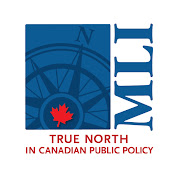(Stacker) – Since his reelection, President Trump has followed through on campaign promises to impose tariffs on America’s biggest trading partners—Canada, China, and Mexico—in an attempt to further his terms on trade, borders, and drug trafficking crackdowns. But the tariff threats, reversals, deals, and reprisals are leaving consumers, businesses, and economists experiencing whiplash about what’s going to happen next.
Tariffs are import taxes on foreign goods, but it’s not foreign companies who pay them. When the United States slaps a tariff on Chinese steel, American businesses that import the material pay up. Fees are collected by Customs and Border Protection agents at ports of entry, and into Treasury coffers.
When tariffs rise, those companies face a choice: If they can’t find domestic sources for necessary goods, they must eat the cost and watch their profits shrink, or pass the rising fee on to consumers through higher prices.
While the rationale …





![Tariffs could lead to higher prices and supply chain disruptions [Video]](https://canadanewsvideo.com/wp-content/uploads/2025/04/mp_748674_0_Q3JFLGA6OOIYU3ZVI726T7OU6Ajpg.jpg)




![Bible group called 911 about man later arrested in ramming of Vancouver arena, police say [Video]](https://canadanewsvideo.com/wp-content/uploads/2025/06/mp_774964_0_pacificcoliseumJPG.jpg)
![Trump bans citizens of 12 countries from entering U.S., citing national security [Video]](https://canadanewsvideo.com/wp-content/uploads/2025/06/mp_774414_0_UOQYD6DYBZCFPDQTKEN3S5OXHAjpg.jpg)
![Health minister wont intervene on forcing addictions treatment - National [Video]](https://canadanewsvideo.com/wp-content/uploads/2025/06/mp_773153_0_marjoriemicheljpg.jpg)
![G7 protests to be livestreamed to leaders in Kananaskis to give protesters a voice [Video]](https://canadanewsvideo.com/wp-content/uploads/2025/06/mp_772625_0_CP174620804jpg.jpg)
